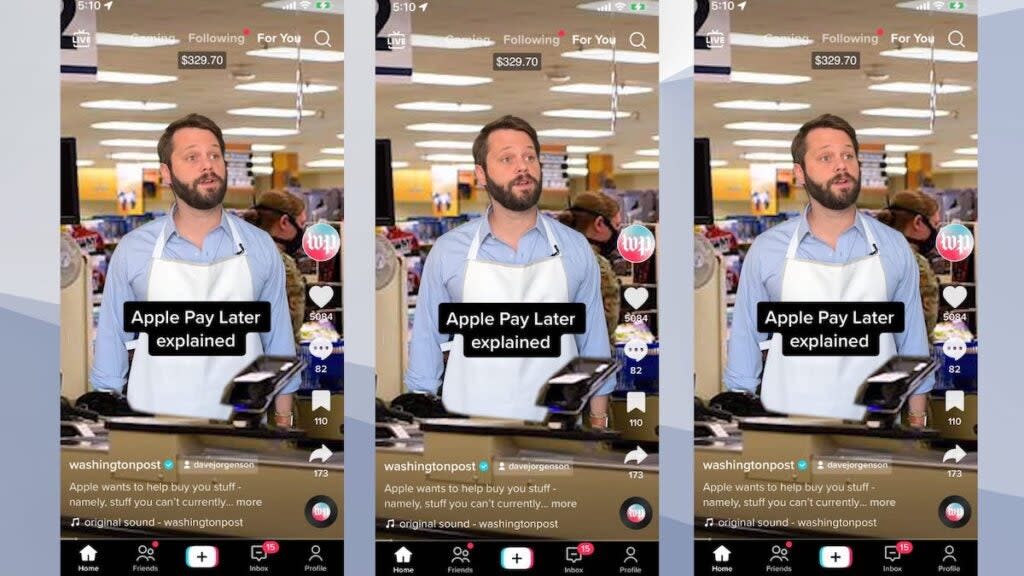TikTok, Instagram, Facebook and YouTube Are All Starting to Look the Same | PRO Insight

- Oops!Something went wrong.Please try again later.
Social media feeds are melting together. Instead of using separate apps for friends, family, news, culture and entertainment, you can now see it all on Facebook, YouTube, TikTok and Instagram. Open any and you’ll likely be watching vertical looping videos, almost assuredly from people you don’t follow. The content is so similar it’s easy to forget which app you’re on.
The homogenization of social media is a testament to TikTok’s success — AI-based recommendations simply crush the follow model — but when apps look so uniform, it doesn’t tend to persist for long. Winners can roll up and dominate, creators can assert their value and governments can grow emboldened toward action. Some degree of this is already underway; the rest will likely come.
This week, let’s look at four key ways the growing homogenization of social media will likely play out:
A winner will take the market
The follow model, for all its faults, let you build distinct feeds on different apps. You could build a news and culture feed on Twitter, a friends and family feed on Facebook, a celebrity and interest feed on Instagram and an entertainment feed on YouTube. But when these apps replaced the follow model with algorithms — which consider all the content on an app, and serve what they think you’ll like — the purpose-built feed died.
Also Read:
TikTok’s CEO Isn’t the Boss | PRO Insight
Now, we’re in a testing-out phase for AI-based recommendations. Every app is unleashing its algorithm on (effectively) the same pool of content, and a winner will eventually emerge. A marginally better app will attract more users, which will give it more data to make its feed better, which will attract more creators to pump it with content, which will open its lead. It’s a flywheel. And eventually, the lesser apps will get worse and fall off.
“There’s a very real possibility that using artificial intelligence, some or generally one of these companies will walk away with the everything app,” Instagram and Artifact founder Kevin Systrom told me on Big Technology Podcast last week. “The benefit you get of having a large user base, of having the best artificial intelligence for recommendations, is enormous.”
A ban becomes plausible
Ahead of his testimony before Congress last week, TikTok CEO Shou Chew shared that 150 million Americans and 5 million businesses use his app. The implication was that banning TikTok would hamper these businesses’ ability to reach customers. But U.S. government officials are wise to the fact that companies on TikTok could migrate to YouTube or Instagram. This factors into their consideration of TikTok’s place in the United States.
Also Read:
AI and the Rise of the Machines: Is Hollywood About to Be Overrun by Robots?
“TikTok is uniquely replaceable,” FCC Commissioner Brendan Carr told me via text. “TikTok’s algorithm is not built on the social graph. That means people can switch to other apps with similar approaches to serving up short-form videos and gain traction faster than it would have taken them on a legacy social graph application. So this element of replaceability certainly makes it relatively easier to get a TikTok ban across the finish line.”
Carr supports a TikTok ban. And though the U.S. has more to debate on its advisability, he’s spot on regarding how the state of social media will factor.
More revenue will pour in
Advertisers love standardization. It helps them know how much to pay, what to create, and how to measure. And when they can do all three things, they spend. On its own, TikTok didn’t merit the full attention of ad agencies because it was just one format in one place, albeit a very popular one. But when the format appears on TikTok, Instagram, YouTube, and Facebook, that type of standardization is appealing.
“It is a multi-year effort for spend to hit scale when any new format is released,” one media buyer told me. In time, the social networks whose engagement has moved over to Reels, Shorts and the like will see some of that money catch up.
Top creators in control
Finally, when all social networks index the same content, they’ll be desperate to differentiate. So they’ll bid for creator exclusivity. Millions of dollars will head to creators who promise to post on only one app — or even delete their accounts on others. The apps will be programmers, not just builders, using human taste, judgment, and dealmaking skills alongside their AI. It’s the great wildcard in this competition.
Also Read:
This Story Was Not Written by a Robot: AI and the Future of News Media

